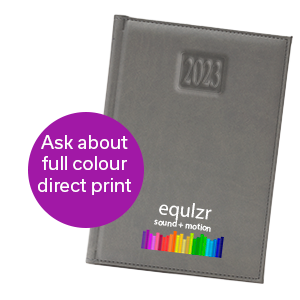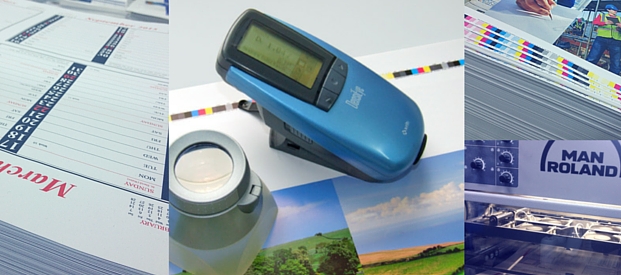Long Live Printed Media!
It may be felt that the print industry could be slowly dying off and is being replaced by digital media. The arguments supporting the death of the print industry are persuasive: using less paper means using less of the world’s resources; no one wants to read print anyway; why read something on paper when you get it all at the touch of a button on your digital device?
It’s not hard to see why printed media is suffering from negative ‘press’ (plenty of which, ironically, has been printed in newspapers) but, if you dig a little deeper the truth tells a completely different story. Not only are people increasingly worried about the health and societal effects of extensive screen time from smart phones, tablets, computers and television, they also prefer to read on paper when given the choice.
Paper is seen as ‘safe’
In a survey (1) published earlier this year by international research company Toluna, respondents summarised that they see paper as ‘safe’ and easier to learn from than digital media. The survey revealed that 79% of respondents found printed media more relaxing to read, while 60% of mobile/smart phone users (rising to 71% amongst the 18 – 24 year olds) were concerned about how these devices were damaging their health (eye strain, headaches, insomnia).
There have been several surveys conducted concerning sleep patterns and smart phone use: one conducted in 2014 (2) compared sleep patterns following e-book or print-book reading before bedtime. It found that the use of light-emitting devices before bedtime prolongs the time it takes to fall asleep, delays the circadian clock, suppresses levels of the sleep-promoting hormone melatonin, reduces the amount and delays the timing of REM sleep (the most effective kind of sleep), and reduces alertness the following morning.
The blue light emitted by smart phones can disrupt our sleep significantly. Another survey in 2013 (3) showed that while watching television in the hour before bed can disrupt sleep, being on a smart phone causes even poorer sleep quality. This blue light communicates to the brain that it is morning, activating waking rather than sleeping processes.
Print media is better to learn from
There have been several studies showing that people retain information far better when reading in print. Interestingly in an article in The Guardian (5) recall of events in the correct order is much stronger when read in a paper book as opposed to on a tablet or Kindle device. People also prefer to learn from print – 66% of respondents (4) believe that books are more likely to encourage learning and the development of other skills than using screens.
A very persuasive 84% of respondents (4) understood, retained or used information that had been printed and read on paper much better than information received on a screen, while 83% (4) stated a clear preference for reading print on paper for more complex topics.
People take more notice of print advertising
Interestingly, 79% of people (4) see print media as a relaxing medium. There are also potentially lucrative opportunities for those businesses who continue to print on paper: 54% of people (4) pay more attention to advertisements when reading magazines in print and only 19% of people (4) pay attention to adverts when reading magazines online.
Myth: paper and print is a wasteful product
The European declaration on paper recycling (6) reveals that in Europe, we recycle 72% of paper and that recycled paper and print waste is now a valuable and sought after resource. Market demand is high. The tissue industry, newspaper and corrugated packaging industries all use tonnes of recycled paper. These figures are from WRAP, the Waste and Resources Action Programme:
• All of the newsprint used in the UK contains around 78% of recycled paper.
• UK tissue mills use around half million tonnes per year of high grade recycled paper.
• Corrugated packaging material consists nearly of 100% recycled material.
• 67% of paper and cardboard used in the UK is recovered for recycling.
• 11 million tonnes of CO2 equivalent emissions were avoided by recycling paper and board in 2008, the equivalent of taking around 3½ million cars off the road.
There is room for both
In summary, it seems that people want both, and use both according to their needs. Those of us who continue to operate within the realms of printed media are seeing less competition, and so what we produce carries greater impact. There has been a real return to the favour of printed materials in a world where they have become less prevalent.
A consumer seeing an online advertisement won’t necessarily see it again unless he visits that website again or is re-marketed to. A consumer who buys a printed product, such as a calendar for example, will see that advert every time he uses or references the calendar. For most, this is every day, all year.
Printed media carries impact and it lasts. It is still the most effective form of advertising in our mind.
References
(1) Survey carried out in May 2015 by international research company Toluna. It sought the opinions and preferences of 500 consumers in the UK and 1,000 in the US on a number of issues relating to the switch from paper-based to digital media. http://www.twosides.info/download/Learning-and-literacy-Report-UK.pdf
(2) http://www.pnas.org/content/112/4/1232.full
(3) http://www.ncbi.nlm.nih.gov/pmc/articles/PMC3836340/
(4) Respondents in the Toluna survey
(5) http://www.theguardian.com/books/2014/aug/19/readers-absorb-less-kindles-paper-study-plot-ereader-digitisation
(6) http://www.twosides.info/includes/files/upload/files/European%20Deceleration%20on%20Paper%20Recycling%202011-2015Monitoring%20Report%2C%202012.pdf










